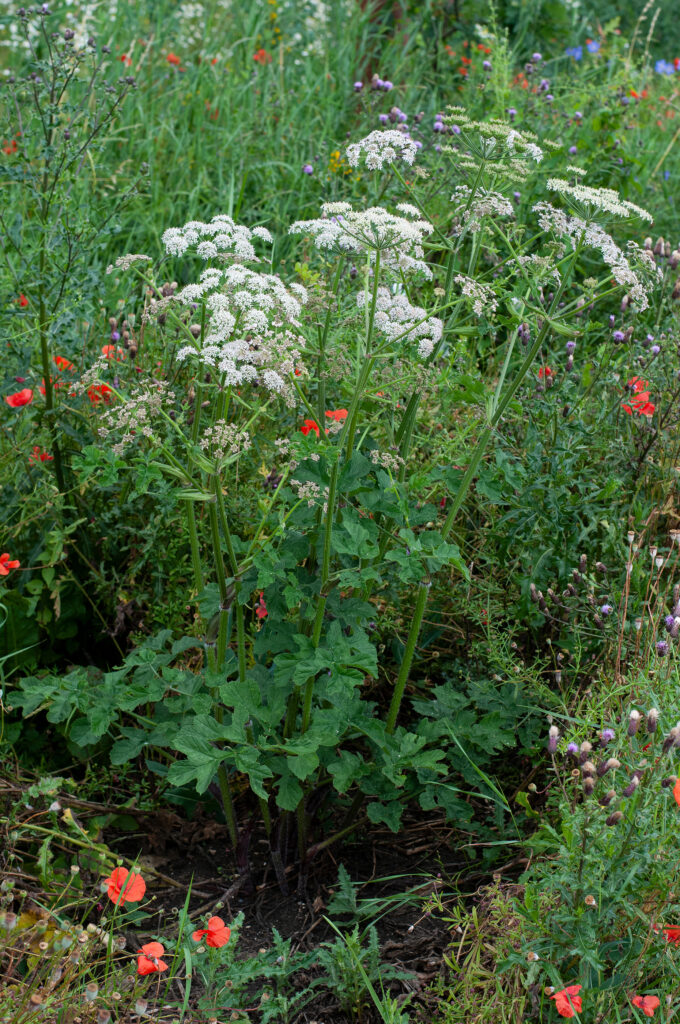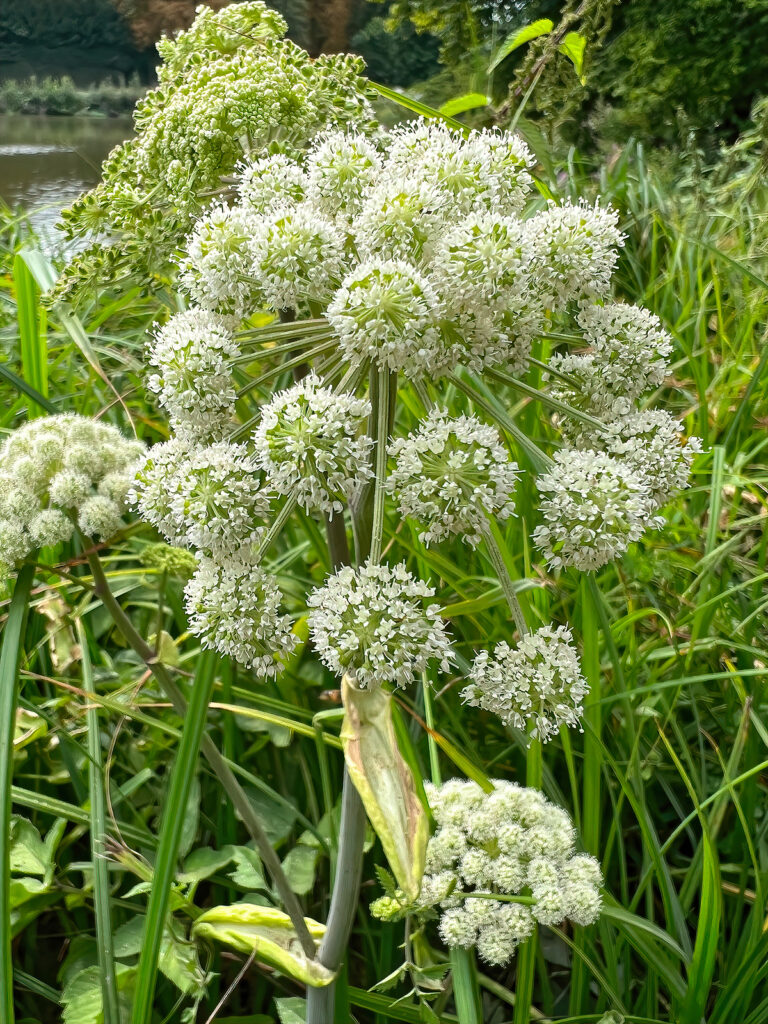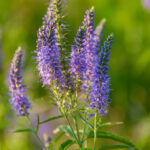Angelica is a herbaceous biennial-perennial plant that is relatively easy to grow. It is a beautiful and versatile herb that can be grown in your garden or in containers.
Angelica is a tropical-looking plant native to northern Europe and western Asia. It has divided and toothed bright green leaves that grow two to three feet long. Angelica blooms in early summer when it sends up large umbrella-sized and shaped cluster of greenish-yellow flowers atop 6-foot stems. The flower umbels are folliwed by decorative yellow-green seedpods.
Angelica is large, bold, and lush, It makes a striking focal point in the garden. It can be planted in borders, cottage and meadow gardens.
Angelica leaves can be added to salads. The leafstalks can be cooked and eaten like asparagus. Both the leafstalks and hollow flower stems can be candied and used to decorate pasteries.

Get to know Angelica
- Plant type: Biennial or perennial
- Growing zones and range: Zones 3-9
- Hardiness: Frost sensitive; will die back in winter
- Height and width: 5 to 6 feet tall and 3 feet wide
- Foliage: Large celerylike leaves; divided and toothed coarse cut and bright green with licorice aroma
- Flowers: Saucer-size umbels of locay greenish white flowers
- Bloom time: Early summer
- Uses: Large borders and single specimens for architectural effect; stems used as an anise flavoring and confectionary
- Common name: Angelica, wild parsnip, cow parsnip
- Botanical name: Angelica archangelica
- Family name:Apiaceae
- Origin: Northern Europe and western Asia
Where to plant Angelica
- Angelica thrives in partial shade to full sun, in moist, rich, and well-drained soil. Choose a spot in your garden that receives at least 4-6 hours of sunlight per day.
- Angelica wants full sun in cooler climates.
- Angelica plants prefer an area that has good drainage and receives plenty of sunlight.
- Angelica can grow quite tall, reaching up to 6 feet in height. If the plants become too leggy or floppy, you can trim them back to encourage bushier growth.
When to plant Angelica
- Sow angelica seeds in the spring, either directly in the garden or in pots indoors. Seeds can take up to three weeks to germinate.
- Seeds can be started indoors 8 to 10 weeks before the last frost; set seedlings in the garden after the last frost.
- Plant container-grown plants in spring.

Planting and spacing Angelica
- Space Angelica plants 3 feet apart.
- Angelica can be grown from seeds, which can be started indoors in early spring or directly sown into the garden in late spring.
- Prepare the soil by loosening it and adding organic matter such as compost to improve fertility and drainage.
- Sow the seeds about 1/4 inch deep; press seeds into the soil and cover with a thin layer of soil. Keep the soil consistently moist until the seedlings emerge.
- Once the seedlings have grown to a few inches tall, they can be transplanted into the garden or larger containers. Space the plants about 3 feet apart to allow for adequate air circulation.
- Angelica is taprooted and does not trasnplant well. It is best to sow seeds or set plants where you want them to grow.
How to water and feed Angelica
- Angelica plants require regular watering to keep the soil consistently moist. Keep the soil consistently moist but not waterlogged. However, be careful not to overwater as this can cause root rot. Water the plants at the base, avoiding wetting the foliage to prevent disease.
- Angelica plants benefit from a balanced fertilizer application in the spring and mid-summer. Angelica also benefits from a balanced fertilizer every 4-6 weeks during the growing season.This will help promote healthy growth and flowering.
Angelica care
- Angelica can grow quite tall, reaching up to 6 feet in height. If the plants become too leggy or floppy; give Angelica support to prevent it from flopping over, especially in windyt conditions.
- Trim Angelica back to encourage bushier growth. In the fall, cut the plants back to the ground and mulch heavily to protect them over the winter.
- Trim back any dead or damaged leaves and flowers to promote new growth. Pruning can also help maintain a neat appearance and prevent overcrowding. Cut out the flowering stem after it has bloomed to prolong the plant’s life.
- Adding a layer of mulch around the base of the plant can help retain moisture and suppress weeds. Mulching around the base of the plant can help retain moisture and suppress weeds. Use organic mulch such as compost or straw, and apply a layer around the plant, keeping it away from the stem.
- Divide Angelica every few years to maintain vigor. Dig up the plant in early spring or fall, divide the rootball, and replant the divisions.

How to harvest Angelica
- Angelica can be harvested in the second year of growth. Cut the stems at ground level and hang them upside down in a dry, well-ventilated area to dry. Once dried, store the leaves and roots in an airtight container for later use.
- Cut back the flower stalks as soon as they appear to promote leaf growth. Harvest the leaves as needed throughout the growing season.
- Angelica leaves can be added to salads; the leafstalks can be cooked and eaten like asparagus; both leafstalks and hollow flower stems can be candied and used as a confectionary; the seeds are used to flavor wines, vermouth, and liqueurs.
Angelica pests and diseases
- Angelica can be susceptible to aphids and powdery mildew, so keep an eye out for these pests and treat them promptly.
Angelica propagation
- Angelica can be propagated from seeds or by dividing established plants. Sow the seeds in early spring, pressing them lightly into the soil and keeping them moist until germination. Alternatively, you can plant established seedlings or divisions in the spring.
- Seeds ripen in fall.















